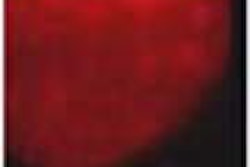CHICAGO - The pain of compression during a breast exam could deter women from undergoing screening mammography. According to a 1997 Australian study that surveyed the degree of pain experienced by 200 women during a mammogram, nearly 30% reported moderate, considerable or severe discomfort, a much higher level than reported in previous studies (Australasian Radiology, August 1997, Vol.41:3, pp. 247-252).
A radiolucent cushion developed by BioLucent of Aliso Viejo, CA offers one solution for reducing discomfort. The results of a clinical assessment of the Woman's Touch MammoPad were presented at the RSNA meeting on Monday.
Developed by Dr. Gail Lebovic, a breast surgeon at Stanford University Hospital in Palo Alto, CA, the MammoPad is a soft, adhesive-backed, single-use foam cushion that is completely invisible to mammography X-rays.
In the U.S., there are 60 million women who should undergo breast cancer screening, but many women skip mammography because of the pain, said presenter Dr. Susan Roux, who is with the MemorialCare Breast Center at Orange Coast Memorial Medical Center in Fountain Valley, CA. For this study, the pad was tested at Roux’s institution as well as at Falun Central Hospital in Falun, Sweden.
One thousand three hundred forty three consecutive patients (838 in Sweden; 505 in the U.S.) who presented for screening mammography were evaluated at the two hospitals. Standard cranio-caudal and medial-lateral oblique images were obtained from each patient. The radiolucent cushion was placed onto the compression surface of the mammographic equipment, but was only used to image one breast. The opposite breast served as the control with standard compression. All patients completed a questionnaire before and after the mammogram in which they rated the level of pain. The questionnaire also compiled data on patient age, hormonal status, compression force, mAs and kVp.
According to the results, 60% of the women at the Swedish site and 74% of the women at the U.S. site reported a significant reduction in pain with the MammoPad. Of those patients who reported a positive experience, pain was reduced by 50% (Sweden) and 86% (U.S.).
"The whole point is if we can reduce pain [during the exam], we could increase compliance and save lives," Roux explained.
In addition, there was an increase in compression force and no degradation in image quality. Image quality was maintained, and detection of malignant and benign findings was unaffected. Incorporating the pad in the mammography protocol does not require any change in positioning by the radiologic technologist, Roux told AuntMinnie.com.
Finally, according to the survey results, patient age, hormonal status, and breast size played no role in the comfort level the women expressed with the pads, Roux said.
While some session attendees expressed some skepticism about the cost of the pads – each single-use pad is $5 apiece and two pads are generally recommended for an exam – Roux said at her institution, many patients have been happy with just the lower pad.
Dr László Tabár, who tested the pad at the department of mammography at Falun Central Hospital, pointed out that the cost of treating breast cancer far outweighed the cost of the pads. Tabár serves as a research consultant for BioLucent.
Inventor Lebovic added that, although the pad looks very simple, the radiolucent material is not inexpensive to manufacture.
One difference between the U.S. patients and the Swedish patients was their threshold for pain, Tabár said. He described the Swedish population as "more stoic." As a result, the MammoPad is only used there with patients who have previously complained about their mammography experience, he said.
By Shalmali Pal
AuntMinnie.com staff writer
November 27, 2001
For the rest of our coverage of the 2001 RSNA meeting, go to our RADCast@RSNA 2001.
Copyright © 2001 AuntMinnie.com



















